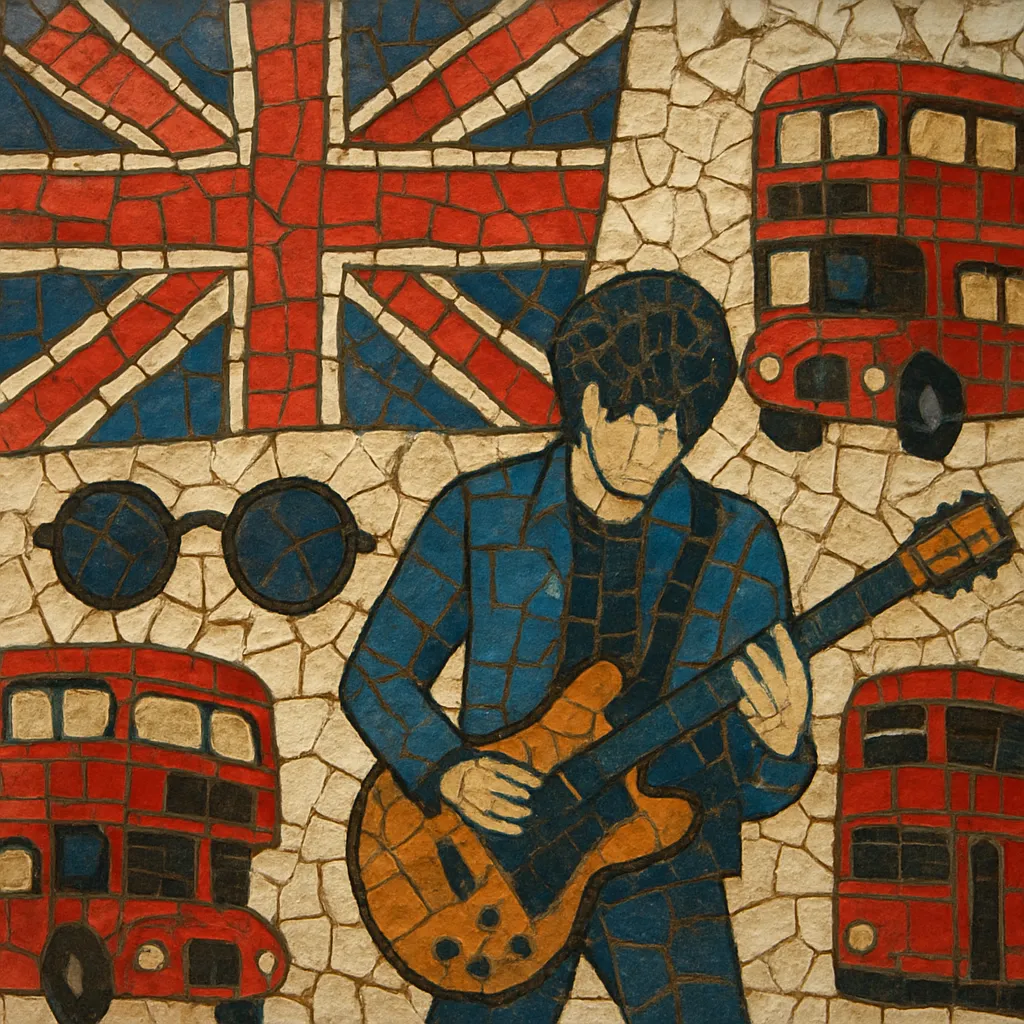Britpop is a UK-centered movement of the early-to-mid 1990s that revived classic British guitar-pop values—memorable hooks, concise songcraft, and everyday storytelling—while positioning itself as a confident alternative to American grunge. It celebrated Britishness in sound and subject matter, drawing heavily on 1960s and 1970s British pop and rock traditions.
Stylistically, britpop tends to feature jangly or crunchy electric guitars, sing-along choruses, and tuneful melodies over straightforward rhythms. Lyrics often focus on ordinary life, class, romance, and wry social observation, typically delivered in unvarnished British accents. The production is generally clean and punchy, favoring clarity over heavy effects and emphasizing immediacy and radio-friendliness.
Britpop emerged in the UK as a spirited reaction to the dominance of American grunge and as a shift away from the hazier textures of shoegaze. A wave of British bands drew inspiration from 1960s beat groups, mod culture, power pop, glam, punk and post-punk, and the jangly indie of the 1980s. Early flag-bearers included Suede, whose 1993 debut helped catalyze the movement, and Blur, who pivoted from baggy and shoegaze elements toward distinctly British subject matter and styles.
By 1994–1995, britpop became a mainstream phenomenon. Pulp’s sharp social portraits, Oasis’s anthemic sing-alongs, and Blur’s satirical vignettes defined the era. The much-publicized 1995 chart rivalry between Blur and Oasis symbolized the movement’s media profile, while magazines (NME, Melody Maker) and labels (Creation, Food, Nude, Parlophone) amplified its momentum. The broader “Cool Britannia” zeitgeist—fashion, film, and art—reinforced britpop’s cultural presence and national branding.
Musically, bands favored compact song forms, bright guitar tones, and prominent choruses. Lyrics often depicted everyday British experiences—pub life, class dynamics, romance, and urban routines—delivered with wit and regional accents. While rooted in classic pop-rock, some groups incorporated orchestration (strings and brass) or psychedelic colors, maintaining accessibility and radio appeal.
By the late 1990s, scene fatigue, band fractures, and shifting tastes led to britpop’s decline. However, its impact persisted: its songwriting craft, national self-definition, and melodic guitar-pop template shaped post-britpop bands and fed into 2000s UK indie, indietronica, and festival-ready pop-rock. The movement remains a reference point for hook-first British guitar music and for the integration of local identity into mainstream pop-rock.
Use two electric guitars (rhythm and lead), electric bass, and a punchy drum kit; add acoustic guitar, tambourine, and occasional keyboards (organ, piano) or small string/brass sections for color. Favor bright, jangly tones—think Vox-style amps and chorus-free clarity.
Write in major keys and Mixolydian flavors; keep harmonies diatonic with occasional modal mixture. Common pop progressions (I–IV–V, I–V–vi–IV, ii–V–I variants) work well. Melodies should be memorable and singable, with strong pre-chorus lift into a big, hook-centered chorus.
Stick to tight 4/4 with backbeat on 2 and 4. Typical tempos range from 100–140 BPM. Drums should be dry and forward, with crisp hi-hats and snare; add tambourine or handclaps to bolster choruses.
Focus on everyday British life: class, friendship, pubs, council estates, work, romance, and wry social commentary. Keep the diction conversational, specific, and locally grounded; don’t shy away from regional accents or idioms.
Aim for clarity and immediacy. Double-track rhythm guitars hard left/right; place lead guitar lines or short riffs to punctuate verses. Keep effects modest (subtle overdrive, slapback or short room reverb). Reserve strings or brass for dynamic lifts in bridges or final choruses. Prioritize vocal intelligibility and hook emphasis.
Use concise verse–pre–chorus–chorus with a middle-eight for contrast. Start with a catchy riff or vocal hook, draft lyric vignettes around specific places and characters, then refine to a tight 3–4 minute arrangement. Ensure the chorus lands lyrically and melodically, and revisit the intro hook at the outro for cohesion.
Jangly chord voicings (add2/add9), melodic bass countermelodies, call-and-response between vocal and lead guitar, and a tambourine driving the chorus all help cement the style.


